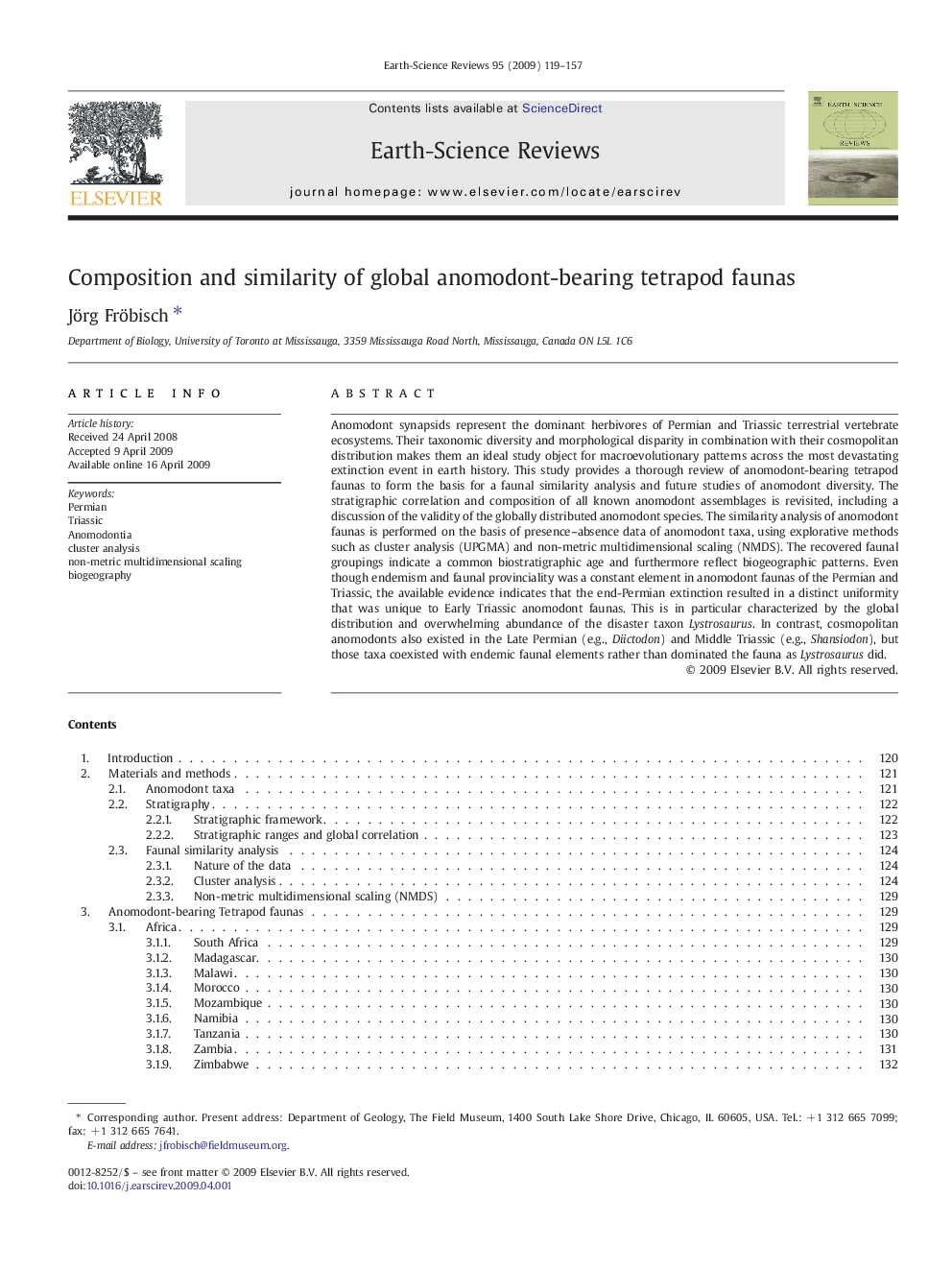| Article ID | Journal | Published Year | Pages | File Type |
|---|---|---|---|---|
| 4726182 | Earth-Science Reviews | 2009 | 39 Pages |
Anomodont synapsids represent the dominant herbivores of Permian and Triassic terrestrial vertebrate ecosystems. Their taxonomic diversity and morphological disparity in combination with their cosmopolitan distribution makes them an ideal study object for macroevolutionary patterns across the most devastating extinction event in earth history. This study provides a thorough review of anomodont-bearing tetrapod faunas to form the basis for a faunal similarity analysis and future studies of anomodont diversity. The stratigraphic correlation and composition of all known anomodont assemblages is revisited, including a discussion of the validity of the globally distributed anomodont species. The similarity analysis of anomodont faunas is performed on the basis of presence–absence data of anomodont taxa, using explorative methods such as cluster analysis (UPGMA) and non-metric multidimensional scaling (NMDS). The recovered faunal groupings indicate a common biostratigraphic age and furthermore reflect biogeographic patterns. Even though endemism and faunal provinciality was a constant element in anomodont faunas of the Permian and Triassic, the available evidence indicates that the end-Permian extinction resulted in a distinct uniformity that was unique to Early Triassic anomodont faunas. This is in particular characterized by the global distribution and overwhelming abundance of the disaster taxon Lystrosaurus. In contrast, cosmopolitan anomodonts also existed in the Late Permian (e.g., Diictodon) and Middle Triassic (e.g., Shansiodon), but those taxa coexisted with endemic faunal elements rather than dominated the fauna as Lystrosaurus did.
